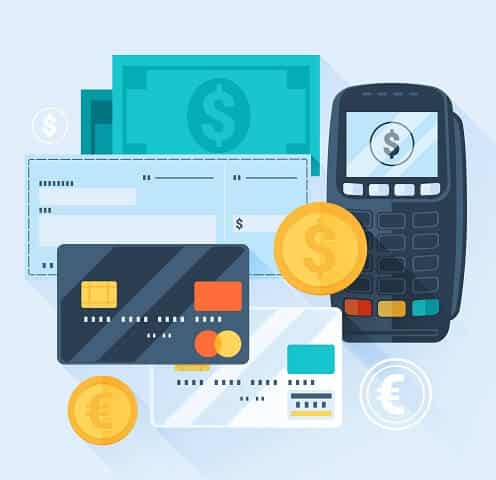Payment Orchestration Explained

The burgeoning growth of eCommerce has changed the landscape for retailers interested in reaching a global customer base. eCommerce sales grew by more than 14% in 2021 as a growing number of consumers turned to online shopping after the pandemic. With a click of a button, online shoppers around the world can now easily purchase goods and services. This convenience has driven the need for optimized payment solutions that can keep up with the unprecedented growth in customer demand. To remain competitive, retailers have turned to payment orchestration platforms (POP) to streamline the payment process. Read on to learn how payment orchestration is redefining how payments are accepted in the rapidly expanding eCommerce ecosystem.

What is payment orchestration?
Payment orchestration platforms are software solutions that provide a centralized hub for processing payments. By integrating with various payment service providers (PSPs), these platforms give retailers the ability to offer their customers a variety of payment options while simplifying the back-end payment process. This results in a faster, more seamless payment experience for customers and helps to increase conversions for retailers.
How does payment orchestration work?
Payment orchestration platforms are software solutions that manage the end-to-end process of customer payments, from the initial purchase to the final settlement. By integrating with a retailer's existing system, a payment orchestration platform can automate and optimize the entire payment experience. Payment orchestration platforms, otherwise known as payment orchestration layers, typically have two core components: front-end orchestration and back-end orchestration.
Front-end orchestration is the process of selecting and connecting the best PSPs for a retailer's needs. This includes factors such as transaction fees, geolocation, and customer payment method preferences. By integrating with multiple PSPs, front-end orchestration platforms give retailers the flexibility to offer their customers a variety of payment options.
Back-end orchestration is the process of managing and processing payments through the various PSPs. This includes reconciling transactions, issuing refunds, and tracking customer data. Back-end orchestration platforms simplify these processes by providing a centralized hub for all payment-related activity.
What are the benefits of payment orchestration?
Payment orchestration provides several benefits for retailers, including:
- Increased efficiencies: By integrating with multiple PSPs, retailers can offer their customers a variety of payment options while simplifying the back-end payment process. This results in a faster, more efficient payment experience for customers and helps to increase conversions for retailers.
- Increased revenue: By offering a more seamless payment experience, retailers can increase online sales and grow their revenue. By integrating with multiple PSPs, retailers can expand their customer base across international borders by accepting a variety of payment types. Value-added services like buy now, pay later and stored cards can also be included, which can improve customer conversion rates.
- Reduced costs: By automating the payment process, payment orchestration platforms can help retailers to reduce operational costs. In addition, by integrating with multiple payment providers, these platforms can help retailers to negotiate better rates and terms.
- Improved visibility: Payment orchestration platforms provide retailers with real-time data analytics. This includes data on customer behavior, payment trends, and fraud activity. This data can be used to further optimize the payment experience and to identify new business opportunities.
- Decreased compliance burden: To comply with industry regulations, retailers are responsible for ensuring that their payment systems are secure. Payment orchestration platforms can help to reduce these responsibilities by integrating with various security solutions and by providing data analytics that can help to identify potential risks. Payment orchestrator platforms use the latest security technologies including tokenization to protect customer data and ensure compliance with industry regulations.

Does my business need a payment orchestration platform?
Payment orchestration platforms are beneficial for any business seeking to remain competitive in today's digital landscape. From small e-commerce businesses to large multinational corporations, POPs will help streamline the payment process, improve customer experience and conversion rates, and increase top-line growth. Merchants aiming to differentiate themselves with an exceptional payment experience should explore how payment orchestration can help optimize their business.
Before choosing a payment orchestration platform, merchants should evaluate their business's current state and long-term objectives while considering their budget and any technical limitations that may impact their ability to implement a POP.
While all POPs will offer basic features such as the ability to integrate with multiple PSPs and streamline the back-end payment process, some platforms may offer additional features that are specific to certain types of businesses. For example, cross-border businesses may require a platform like Payoneer or Corefy that both support over 150 currencies in more than 200 countries. Other businesses, such as those with high transaction volumes, may require a platform that can handle millions of transactions per day, like Spreedly.
The bottom line
Payment orchestration is redefining how payments are accepted in the digital age. By integrating with multiple payment providers and automating the back-end payment process, these platforms are helping businesses to streamline the payment experience for customers while reducing operational costs. For merchants looking to differentiate themselves with an exceptional payment experience, a payment orchestration platform is a valuable solution.
For more information on this topic contact us, and to learn more on other payment topics visit the Justt blog.
Contact us today






